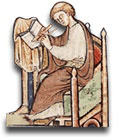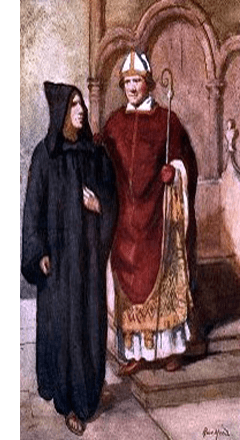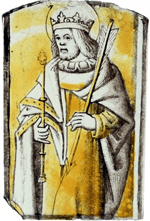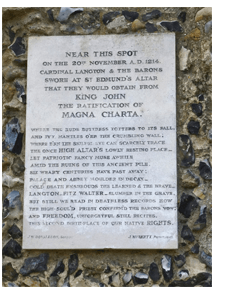- Home
- About Us
- The Great Charter
of Bury St Edmunds - The Magna Carta
- The Pageants
- Events
- Past Events
- Resources and Links
- Photo Gallery
- Rebecca’s Magna Carta Blog
Pageants Exhibition at Moyse’s Hall 4 May to 28 August 2015 FREE
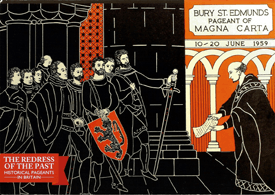
The Great Charter and Bury St Edmunds
In 2014 Bury St Edmunds celebrates the 800th anniversary of its very special heritage as a Magna Carta Charter Town.
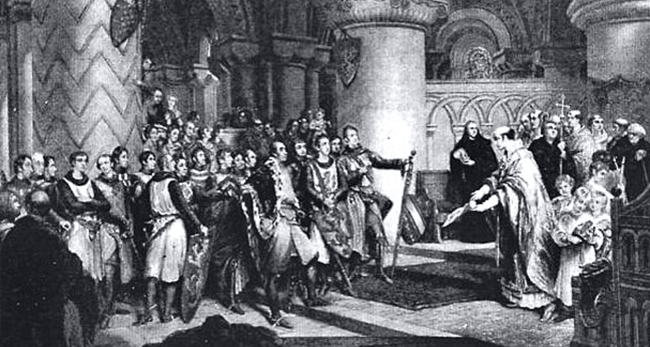
|
The Bury St. Edmunds connection is related in Flores Historiarum (The Flowers of History), a chronicle written by Roger of Wendover (d. 1236), a monk in the Benedictine monastery of St. Albans. He says that: |
“About this time the earls and barons of England assembled at St Edmund’s as if for religious duties, although it was for some other reason; for after they had discoursed together secretly for a time, there was placed before them the charter of King Henry the First, which they had received, as mentioned before, in the City of London from Stephen, Archbishop of Canterbury. This charter contained certain liberties and laws granted to the holy church as well as the nobles of the kingdom, besides some liberties which the king added of his own accord. All therefore assembled in the church of St. Edmund the king and martyr, and commencing from those of the highest rank, they all swore on the great altar that, if the king refused to grant these liberties and laws, they themselves would withdraw from their allegiance to him, and make war on him, till he should, by a charter under his own seal, confirm to them every thing they required; and finally it was unanimously agreed that, after Christmas, they should all go together to the king and demand the confirmation of the aforesaid liberties to them, and that they should in the meantime provide themselves with horses and arms so that if the king should endeavour to depart from his oath, they might by taking his castles compel him to satisfy their demands; and having arranged this, each man returned home.” |
|
|
The date of this meeting is not known, but historians believe that the most likely date was 20 November 1214, the feast of St. Edmund, when people might well have congregated at the Abbey for prayer. |
Not all historians accept Roger of Wendover’s account: J.C. Holt has pointed out that Wendover was not always the most reliable of chroniclers and that there is no mention of the meeting in the surviving Bury St. Edmund sources. However, other historians are more sympathetic. R.M. Thomson considers that a great pilgrim shrine would offer the rebels a good cover for their meeting. He also observes that Wendover’s account receives some support from another contemporary source, the Chronique de VHistoire des Dues de Normandie, which describes a meeting of the barons before the sealing of Magna Carta although it does not say where it took place. |
|
|
Bury St Edmunds people have treasured this link with Magna Carta. In 1849, two commemorative plaques were erected on the ruined piers of the crossing of the Abbey Church. The Borough’s motto, Sacrarium Regis, Cunabula Legis, also seems to date from about this time. |
